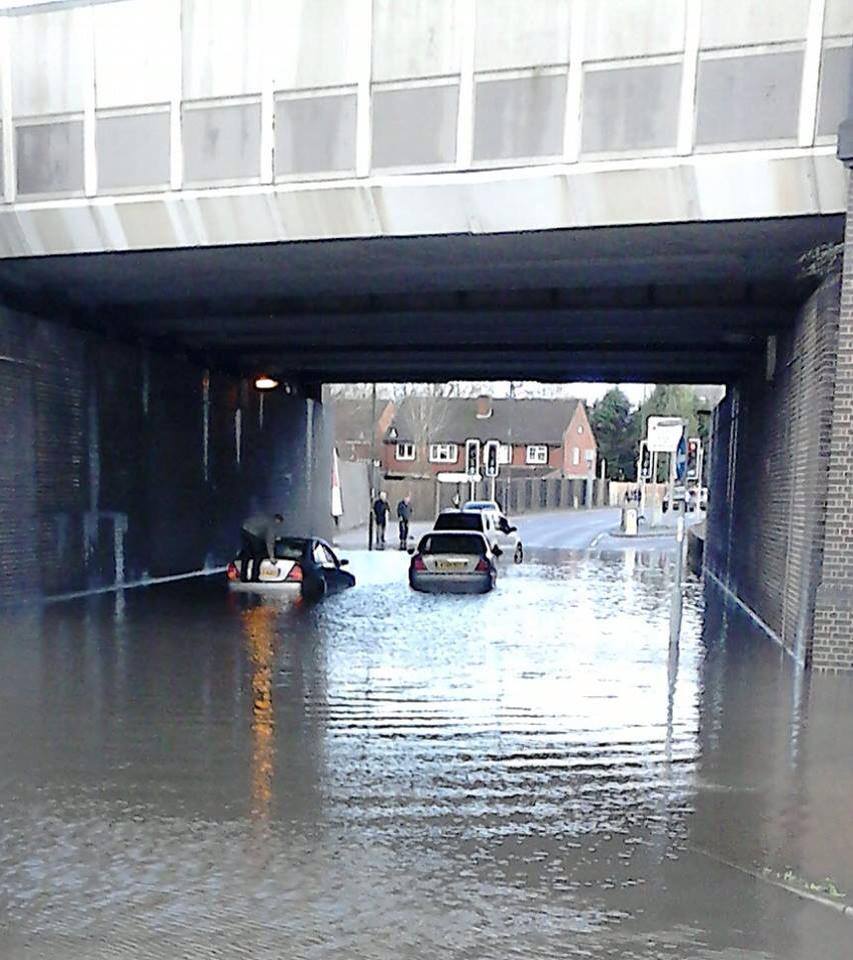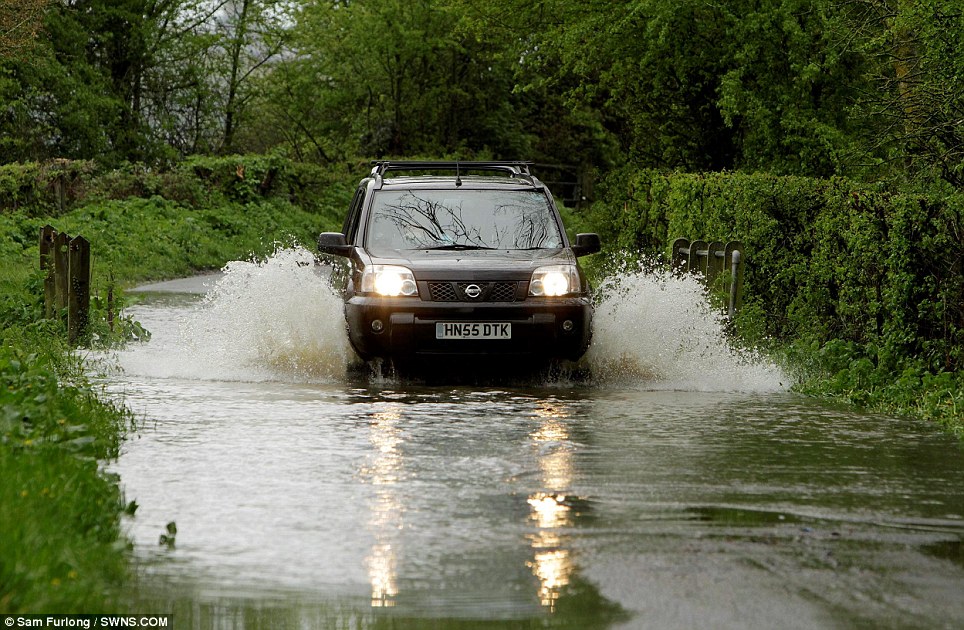The below video shows what can happen when floods are deal with poorly, this will have cost the driver a new engine setting them back a few thousand pounds.
Car drives through deep flood too fast and engine dies
Tip 1 - Look well ahead to spot flooded areas early
The earlier you spot the flood the more time you will have to assess how you are going to deal with it. As you will read further down in this article it is not advisable to drive fast through flooded areas, so by spotting it early you will have more time to slow down to an appropriate speed.
Tip 2 - Anticipate where floods could form
Floods will normally form at the bottom of hills after periods of heavy rain, as this is where all the water will collect. So if you are going down a hill be ready for a flood at the bottom of the hill. Also listen to news and other recourses to see which roads are flooded and avoid them where possible. After all you don't want to be going down a hill and have a blind-bend (One you can't see around) coming up and then around that bend there is a large flooded area, you may not have time to slow down sufficiently to successfully deal with it.
Tip 3 - Check the depth
Before attempting to go through a flooded area check the depth of the water. You could use things such as how high the water comes on any other cars that attempt to go through or even how high it is in relation to parked cars, street lights and pavements. If you can't see the pavement then the chances are the water is covering it so will be at least a foot deep. Also be aware that the flood water is likely to cover up hazards beneth, such as potholes or kerbs, which could damage your car.

As you can see the pavement if not visible, as the water is covering it, this will mean the water is at least 10cm deep, and not worth the risk of driving through.
Tip 4 - Drive through slowly
If driving through make sure you go very slowly, no more than say 5mph, if you go too fast through it the water can spash up into your engine damage or even cause the engine to stop working all together, and once it is gone it is gone, you will need to either buy a new car or buy a new engine, which could set you back thousands of pounds.
Tip 5 - Don't stop
When driving through avoid stopping the car and don't turn the engine off, as this can give water a chance to get somewhere it should not, for example up the exhast system, which could cause costly damage to your car. Also keep the car in a low gear with high revs, this will reduce the chance of waters entering the engine. Finally avoid changing gear as this could suck water through the exhaust system and cause damage.
Tip 6 - If in doubt, don't attempt it
Even though you may have seen other drivers going through the flood and getting out o.k. don't assume that you will be o.k. as well, the car prior to you may well have just been lucky, you could well be the unluckly one and be driving through when your engine cuts out. The reason why your engine may cut out when driving through water is if water gets into the engines air intake, this is in a different place on different cars, for some cars it is high up (like jeeps), for others it is lower down (like hatchbacks), so basically one car may be able to get through but the next car may not, and the next car may be yours!
Tip 7 - Test your brakes!
After driving through water your brakes may become wet and less effective, so once you have driven though press your brakes a few times to dry them, they may squeak but this is normal when brakes are wet, just ensure they are slowing the car down.
Here is a video to help you further understand how to negotiate flooded roads.
